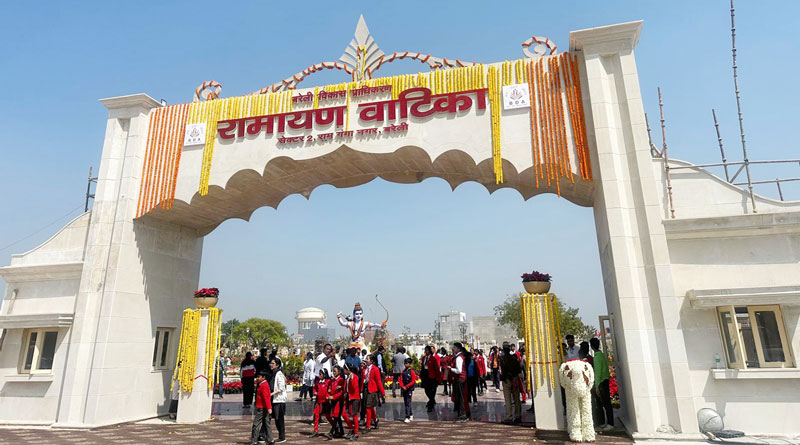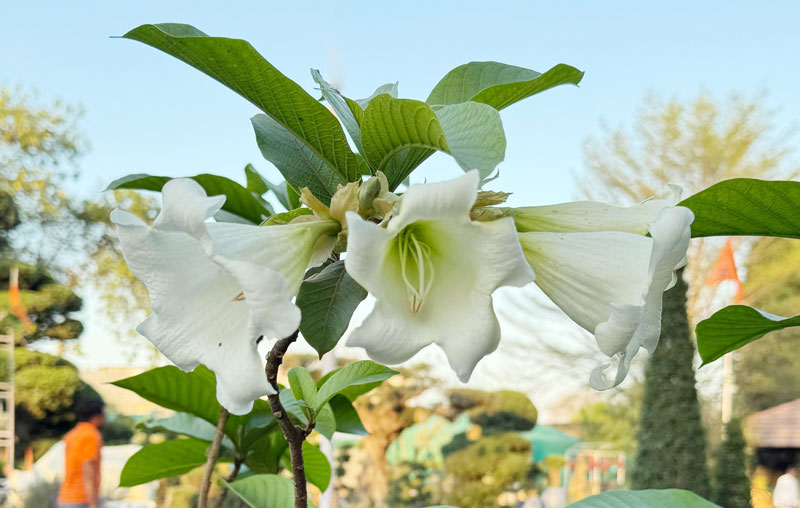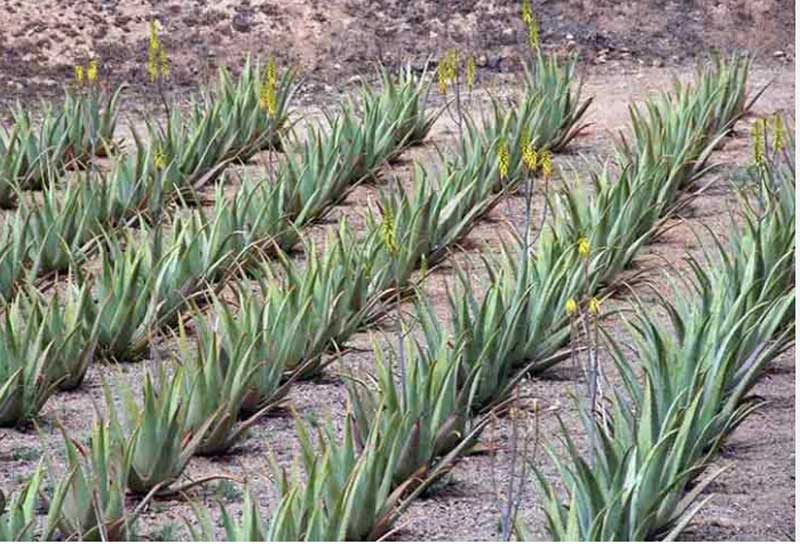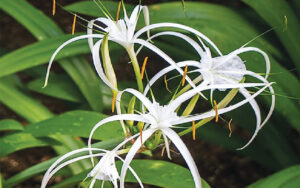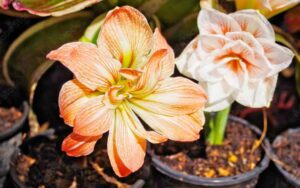Unravelling beauty of Lilium flower…
New Delhi: The cultivation of Lilium, commonly known as lilies, in India has flourished significantly in recent decades, particularly with the advancement of the floriculture industry and the rising demand for ornamental flowers. The country’s diverse climatic zones, especially in regions like Himachal Pradesh, Uttarakhand, and parts of the Northeast, provide ideal conditions for lily cultivation. Historically, lilies have not been native to India but have found a conducive environment for growth due to the country’s varied altitudes and climates. In Indian culture, lilies symbolize purity and are often used in festive and religious ceremonies, making them a popular choice for floral decorations and gifts. Internationally, lilies carry various cultural significances. In Western cultures, they symbolize renewal and rebirth, particularly around Easter. In Japan, lilies are considered a symbol of good luck and are integral to traditional festivals and rituals.
Lilium is cultivated professionally in India for cut flower production. It is a member of the Liliaceae family. This crop has recently gained popularity in several Indian states. In the floral industry, lilies are in high demand both as potted plants and as cut flowers. Because they make beautiful cut flowers, Oriental and Asiatic hybrid lilies, as well as, to a lesser extent, tiger and Easter lilies, are the most often used types of lilies among the various varieties. These lilies are becoming more and more well-liked in India.
Lilies are great plants for practically every type of garden. In addition to being robust and adaptable, they also provide growers a great range of flower types, heights, and hues. Indeed, their presence in the garden is rather remarkable. They come from bulbs buried underneath and very big, eye-catching June flowers. True lilies are great plants for practically any type of garden. In addition to being robust and adaptable, they also provide growers a great range of flower types, heights, and hues. Indeed, their presence in the garden is rather remarkable, that they are frequently referred to as the “Queen” or “Grande Dame” of the garden in June.
The cultivation of Lilium, or lilies, in India has gained prominence in recent decades, primarily driven by the growing floriculture industry and the increasing demand for ornamental flowers. Historically, India’s favorable climatic conditions in regions like Himachal Pradesh, Uttarakhand, and parts of the Northeast have supported the successful cultivation of these flowers.
In Indian culture, lilies symbolize purity and are often associated with celebrations and religious ceremonies. Their vibrant colors and elegant appearance make them a popular choice for floral decorations and gifting. Internationally, lilies hold various cultural significances. In Western cultures, they are often linked to themes of renewal and rebirth, particularly around Easter. In Japan, lilies are a symbol of good luck and are frequently used in traditional festivals and rituals.
Special Mention
The Council of Scientific and Industrial Research – Institute of Himalayan Bioresource Technology (CSIR-IHBT) has been instrumental in promoting lily cultivation in India. Under the guidance of Dr. Bhavya Bhargava, who is a senior scientist and specializes in Floriculture and Landscaping, at the division of Agrotechnology in CSIR-IHBT. His team focuses on growing lily flowers in difficult terrains and in off-season like, Lahaul region of Himachal Pradesh, as well as the Leh and Kargil districts of Ladakh.
Dr. Bhargava, in a conversation with our team said, “We are focusing on off-season lilium flower production in the Lahaul region of Himachal Pradesh, as well as the Leh and Kargil districts of Ladakh. In Lahaul, we have established two dedicated cut-flower clusters with cold storage facilities, ensuring improved market access. Approximately 500 farmers are engaged in this initiative, cultivating around 7 hectares of lilium in Lahaul and 1 hectare in Ladakh. Flowers from Ladakh are shipped via air cargo, and the collective efforts of the farmers are generating an annual revenue of approximately ₹25 crore.”
The CSIR-Institute of Himalayan Bioresource Technology (IHBT) in Palampur, India, is a beacon of progress and sustainability in the challenging terrains of Lahaul, Leh, and Kargil. Through its dedicated efforts in promoting lilium cultivation, the institute has not only enhanced the beauty of the environment but also significantly improved the livelihoods of local farmers. Over the past decade, distributing more than 126,860 lilium bulbs to growers is just one testament to their unwavering commitment. By educating farmers through comprehensive training sessions, exposure visits, and demonstrations, the CSIR-IHBT has empowered them with the knowledge and skills needed for successful cultivation. The institute’s standardization of floriculture technologies for both open fields and protected environments, along with the development of a tissue culture protocol, underscores its innovative approach to agriculture. Their holistic practices, encompassing every aspect of lilium cultivation from soil preparation to the final transportation of flowers, ensure that farmers can achieve optimal yields and quality. This transformative work not only fosters environmental beautification but also creates employment opportunities, driving economic growth in these remote regions. The CSIR-IHBT’s initiatives exemplify the profound impact of scientific advancement on sustainable agriculture and rural development, making them a cornerstone of progress in the Himalayan region.
Growing Season Lilium
In India, the ideal growing season for Lilium flowers, commonly known as lilies, generally spans from autumn to early summer, adapting to the country’s diverse climate zones. Lilies are best planted in the cooler months of October to December, allowing the bulbs to establish well before the intense heat of the Indian summer. During these months, the mild temperatures and ample sunlight create favorable conditions for the bulbs to root deeply and prepare for the blooming phase. Lilies typically start to bloom from March to June, displaying their vibrant colors and fragrant flowers. The subtropical and temperate regions of India, with their distinct seasonal variations, provide an optimal environment for cultivating these beautiful flowers. Ensuring well-drained soil, adequate watering, and protection from extreme heat is crucial for a successful lily growing season in India.
Soil and Climate
Lilies thrive in well-textured, light, and porous soil rich in organic matter. Regular fertilization is essential to maintain nutrient levels for these bulbous plants. Low salt content is crucial, as lilies are sensitive to high salt concentrations, which can hinder growth. Ensuring the top layers of soil are well-drained throughout the growing period is important. The soil pH should be maintained between 6 to 7 for Asiatic and longiflorum hybrids, and 5.5 to 6.5 for oriental hybrids, to promote healthy root development and nutrient uptake. Optimal growth and flower quality are achieved with night temperatures around 10-15°C and day temperatures between 20-25°C. Excessive heat can result in shorter plants with fewer buds. Additionally, lilies should not be exposed to direct sunlight. During the intense summer months, providing a shading screen with 50-75% shade can prevent stunted growth and protect the plants from high light intensity.
Major Varieties and Colors
In India, several varieties of lilies are cultivated, each known for its distinct colors and characteristics. Major varieties include:
Asiatic Hybrids: Known for their vibrant colors such as yellow, orange, pink, and red.
Oriental Hybrids: Noted for their large, fragrant flowers in shades of white, pink, and crimson.
Longiflorum Hybrids: Often pure white and highly fragrant, used predominantly in religious ceremonies and decorations.
Trumpet and Aurelian Hybrids: Displaying hues of yellow, gold, and white with a trumpet-shaped structure.
Uses of Lilium Flowers
Lilium flowers are used for a variety of purposes such as, in garden landscapes, indoor plantings, and floral arrangements due to their striking beauty and fragrance. They are frequently used in weddings, festivals, and religious functions for decoration and offerings. Some species of lilies have been used in traditional medicine practices for their purported health benefits.
Further, India’s floriculture industry has seen a significant rise in the cultivation and export of lilies. According to the National Horticulture Board, floriculture in India spans an area of about 303 thousand hectares, with lilies being a major contributor. The export of lilies and other ornamental flowers has been increasing, with major markets in Europe, the Middle East, and Southeast Asia. The import of lily bulbs is also noteworthy, with significant quantities sourced from the Netherlands and other European countries to meet the high domestic demand for quality planting material.
Conclusion
The cultivation of Lilium flowers in India stands as a testament to the country’s rich agricultural tapestry and burgeoning floriculture industry. From the sunlit gardens of Himachal Pradesh to the high-altitude landscapes of Ladakh, lilies have found a nurturing home, enriching both the environment and the lives of those who cultivate them. These flowers, with their radiant hues and intoxicating fragrance, symbolize purity, renewal, and beauty, making them an indispensable part of cultural and religious ceremonies.
India’s diverse climatic regions have supported the successful growth of various lily varieties, including the vibrant Asiatic hybrids, the fragrant Oriental hybrids, and the elegant Longiflorum and Trumpet lilies. Each variety adds its own unique charm to the floricultural palette, contributing to the country’s export strength and domestic market appeal.
The dedicated efforts of institutions like CSIR-IHBT have been instrumental in promoting off-season lily production. Their initiatives in the Lahaul region of Himachal Pradesh and the Leh and Kargil districts of Ladakh have transformed local economies. In essence, the story of Lilium cultivation in India is one of growth, beauty, and sustainability. It reflects a harmonious blend of traditional agricultural practices and modern scientific advancements, ensuring that these magnificent flowers continue to bloom, delighting hearts and adorning landscapes across the world.
Shivangi Shanker

